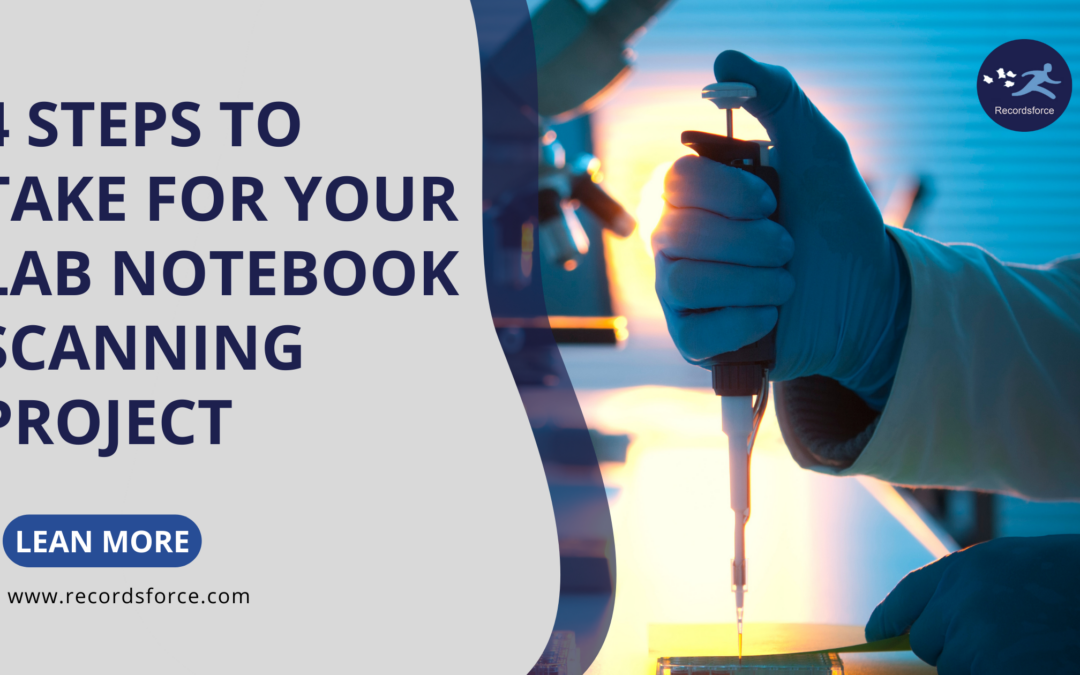Your lab notebooks serve as the primary record of research performed and they’re also proof of intellectual property rights for your organization’s patents and research. Not maintaining secure copies is not an option for this type of documentation. Here are some steps to take to prepare yourself and your intellectual property for safe and secure digitization.
1. Understand Your Needs
The first step is to understand the underlying problem that you aim to solve. Do you need to create a database of all your existing lab notebooks, and send future copies there too, or are you hoping to create an existing database so it’s easier to access archived information? In other words, are you looking to take care of a one time backlog of lab notebooks, or is this an ongoing need in your organization?
Next you need to assess the conditions of your lab notebooks, and what makes them unique. Within the books, are there sticky notes, folded pages, stapled pages, samples? Do you want them scanned exactly as is and returned in the same condition? Do you want them scanned in color or black & white? How are they stored currently? How many do you have, and how many pages are there? These are all questions that can impact your turnaround time regardless of who you partner with to scan your lab notebooks. Once you have these questions answered, you should assess the notebooks that will require scanning, and then explore the options available to you.
2. Find the Right Company
After you understand the scope of service you require, you can begin to narrow down the scanning and processing companies available for options. Most people’s first concern is: How will they get my books and how much will it cost? While these are important questions, the fact is, there have never been more options for shipping and receiving available in this country than there are right now, and your cost is likely going to be entirely based on your volume.
The most important factors to consider are compliance related. How secure is their facility? How controlled is their process? Does their process cross any FDA guidelines for handling these books? Do they have the right equipment to get this job done quickly and accurately? The right company has all of these boxes checked and then some. You need a partner who is very aware of what lines can and can’t be crossed with this type of documentation.
3. Send in Your Documents
Once you’ve chosen a company, you will need to gather all the lab notebooks to be digitized and put together a plan for sending in all future lab notebooks as well. It is important to decide which documents you’d like to digitize and which don’t need to be scanned at all, as your price will ultimately be defined by your volume. Recordsforce created this FLOH method for a high level understanding of what you should keep, but always consult your internal legal team to be absolutely sure about what needs to be retained. From there, we always recommend having the service provider prepare a sample to be reviewed of at least one notebook. This way you can review the quality before they go ahead with the rest of the project. This step is essential to ensuring the utmost quality through the entire process, and can save you a lot of money in certain scenarios.
4. Reap the Benefits
After you have set up a process, sit back, relax, and enjoy accessing your lab notebooks electronically! You have saved your colleagues time by being able to access everything electronically. You saved your company money by freeing up space that was being used entirely for storing paper. You even alleviated the risk your company was taking on by not having digital copies of this valuable information. I’ll bet you didn’t think you were going to make such a big impact on your organization by scanning your lab notebooks did you?

